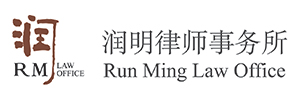Once the facts of patent infringement by a defendant have been established, the determination of the measure of damages becomes the key issue. For the plaintiff, the adducement of evidence relating to the measure of damages is extremely difficult. For this reason, in most patent infringement cases, statutory damages are awarded in an amount which is at the discretion of the court. These are subject to a ceiling of RMB1 million (US$150,000). Accordingly, if the plaintiff’s claim amounts to several million RMB or more, it is likely to receive far less than it has claimed, out of which it will also spend a large amount in court costs. In our experience, patent damages awarded by the courts range between RMB200,000 and RMB300,000. However, there has recently been an increase in the number of cases in which huge damages have been awarded. This is closely connected with the success of the evidence adducement strategies employed by the parties, and the approach of the judges to the trial.

Executive Partner
Run Ming Law Office
In the calculation of damages, a number of basic legal provisions come into play.
Article 64 of the PRC Civil Procedure Law, as amended in 2007, states that a party shall be responsible for providing evidence in support of the claims made by him.
Article 19 of the PRC Tort Law, which came into effect on 1 July, states that if a tort is committed against the property of another, the loss incurred shall be calculated based on the market value of the property at the time the loss occurred, or by other means.
Article 65 of the newly amended PRC Patent Law states that damages for
infringement of a patent shall be based on the actual losses incurred by the rights holder as a result of the infringement. If the actual losses are difficult to determine, the damages may be determined based on the benefits derived by the infringer from the infringement. If both of these are difficult to determine, the damages shall be reasonably determined at twice or more of the royalties for a licence of the patent involved. The damages shall also include reasonable expenditure incurred by the rights holder in attempting to halt the infringement. If all three of these are difficult to determine, the people’s court may award damages of not less than RMB10,000 and not more than RMB1 million on the basis of such factors as the type of patent, and the nature and circumstances of the infringement. (Previously, the statutory measures of damages had been set at between RMB5,000 and RMB500,000.)
Amount of profit lost

Partner
Run Ming Law Office
Before 1 October 2009, there were several approaches the courts could take in determining the measure of damages.
In the first approach, damages were taken as the amount of profit lost by the patent holder as a result of the reduction in sales caused by the infringement. However, there are a number of potential problems with this approach.
First, a reduction in the patent holder’s sales may not necessarily all be due to the infringer, but could merely be due to normal fluctuations in the market. Second, if there is more than one infringer, any drop in the patent holder’s sales may clearly not all be attributable to the infringer in question. Third, there may be circumstances where the patent holder’s sales have not dropped, but the infringer did indeed reap benefits. Finally, there may be circumstances where the patent holder never engaged in sale or production.
Infringer’s profit
Where damages cannot be determined by the method outlined above, the entire profit derived by the infringer as a result of the infringement will be treated as the measure of damages for loss. For this, the court would usually select an assessment company to conduct an audit, but this would, of course, depend on being able to obtain accurate financial information about the infringer.
There are a number of potential problems in this approach. First, evidence of the infringer’s total sales and profits may be difficult to come by. Second, if the infringer produces evidence (whether genuine or not) showing that he is operating at a loss, it may be difficult for the court to uphold the patent holder’s claims. Third, if the defendant’s main business is not the one involving the infringement, it may be difficult to determine the share
attributable to the infringing product.
Royalty on licence contracts
If the measure of damages proves impossible to determine by the methods outlined above, but if the patent holder has executed any patent licence contracts, the measure of damages could be determined to be up to three times the royalty. However, problems may occur if the rights holder has granted multiple licences on the same terms but for different royalty amounts. Also, in practice, there have been cases where the patent holder has forged patent licence contracts.
If the measure of damages proves impossible to determine by all three of the methods outlined above, the court may decide at its own discretion on a figure between RMB5,000 and RMB300,000, and in any event not exceeding RMB500,000.
Amount reasonably determined
Although the original methods of calculating the measure of damages continue to be applied, the approach of the courts has changed somewhat.
Under the new system, if the losses incurred by the rights holder or the benefit derived by the infringer are difficult to determine, the amount will be
determined as twice the reasonable royalty for a licence of the patent. This exceeds the previous limit of one to three times the patent royalty.
The statutory measure of damages has been increased to between RMB10,000 and RMB1 million.
Litigation strategies
Patent holders should devise a multi-pronged strategy for patent litigation. How much effort should be put into halting infringement, and how much into gaining compensation? What evidence should be gathered (such as evidence of sales figures, or indications given in advertisements or on a website of the size of the company)? What method should be used to calculate the claim? An application may be made to court for the preservation of evidence (Supreme Court interpretations indicate that the court will support such applications if it appears that one party is withholding evidence without good reason). If it proves necessary, a rights holder may also apply to court to allow enquiries to be made with the Administration for Industry and Commerce and with the tax authorities.
Wang Yadong is executive partner at Run Ming Law Office
Gao Song is a partner at Run Ming Law Office
Suite 1806, NCI Tower
12A Jianguomenwai Avenue
Chaoyang District, Beijing 100022, China
Tel: +8610 65693511
Fax: +8610 65693512/13
www.runminglaw.com
E-mail:
wangyd@runminglaw.com
gaos@runminglaw.com






















